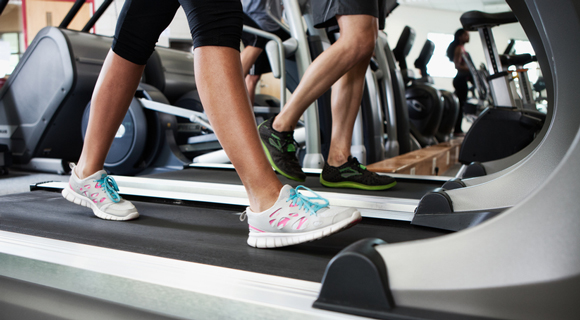
Achieve your dreams
What’s your fitness goal?
When it’s a challenge to find time or energy to work out, it’s easy to lose perspective on why you’re working out. For some, knowing they’re exercising is enough, but others need a goal to get – and stay – excited about fitness.
Setting fitness goals
Your health matters. Your choices matter. What do you want to change? What do you want to do?
There’s no one right fitness goal. It’s all about what you like and what you want. Some people choose goals that are about who they want to be:
- I’m the dad who can keep up with his kids, so we’re going to the park Saturday mornings for an hour.
- I want to be the dancing grandma who takes swing lessons on Friday night.
- I love the outdoors, so I’m going to hike every trail in the county this year.
Others choose something more specific:
- I want to do a sprint triathlon to raise money for my charity.
- I’m entering the wheelchair marathon in honor of my 40th birthday.
- I’d like my best time ever in the 100 meter freestyle at my pool’s Masters swim.
It’s easier to achieve specific goals, because you can measure your progress. Whatever your goal is, remember to have some fun, and if it’s a big goal, break it into bite-sized pieces.
Keep track of your progress
When you’ve got a specific goal, sometimes it helps to record where you’re starting, how you’re doing along the way, and how you feel. Recording your progress can help you spot challenges, think of new things to try, and keep you accountable. Try these ideas for evaluating your fitness as you reach toward you goal:
Keep an exercise diary. Record what you do, how much you do, and how you feel. Every now and then, check your diary to see how you’re doing and if you should change your fitness routine.
Put together a training schedule or calendar. Got a race planned? Want to hit a certain speed or level? Putting your workouts in your calendar, along with what you want to accomplish, can help you increase your fitness gradually, prevent injuries – and keep your eyes on your prize. To get an idea of what’s safe and appropriate, do an Internet search for sample training schedules or see if your team or club has one you can adapt for your goal.
Try a time trial. A time trial is a race between you and the clock. After warming up, start timing your activity. Continue for a specific time period. Stop and record how far you went, your heart rate, and your exertion level on a scale from 0 to 10. Cool down.
Repeat the time trial regularly to see if you can go a greater distance in the same time, at a lower heart rate, or at a lower perceived exertion.
Do a distance test. Estimate about how far you can go in about 5 minutes. After warming up, cover your distance (for example, 10 blocks, one mile, 10 laps, etc.), moving at a brisk, steady pace. Then stop and write down how much time it took, your heart rate, and your exertion level on a scale from 0 to 10. Cool down.
Repeat the distance test regularly to see if you can cover the same distance in less time, at a lower heart rate, or at a lower perceived exertion.
Get help along the way
Joining a team or club – or taking a class – can help you reach your goal. You can swap tips and inspiration with your teammates and classmates, and challenge one another with a little friendly competition.
Try, try again
Even pro athletes have off days. You will too. It’s all in how you learn from your setbacks. To achieve your dream, you may have to experiment a bit – and reach out to your team for support.
Source: Adapted with permission from the Healthy Mind, Healthy Body Handbook (also published under the title Mind & Body Health Handbook), David Sobel, MD, and Robert Ornstein, PhD, 1996.
Reviewed by: Robert Sallis, MD, March 2014
Additional Kaiser Permanente reviewers
©2014 Kaiser Permanente





